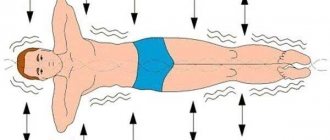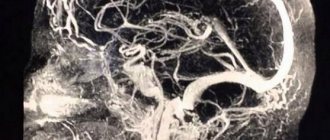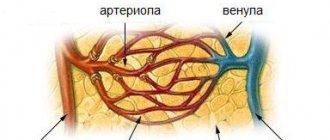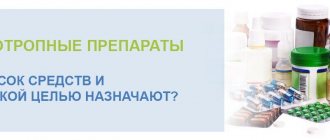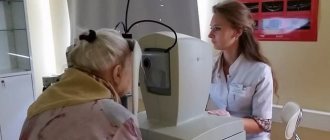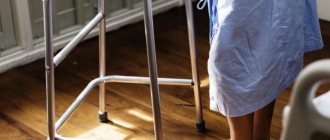Good condition of the cardiovascular system is the key to good health and normal functioning of the main human organs. The heart is a tireless motor that forces blood to move throughout the body. Chinese medicine believes that blood supplies organs not only with oxygen, but also with vital energy (Qi). That is why the condition of the vessels through which it flows is so important.
The functioning of the cardiovascular system is influenced by many factors: stress, chronic diseases, genetic predisposition. Today, not only older people, but also young people suffer from heart disease. Chinese gymnastics for blood vessels “Qigong” helps to maintain and improve their condition, as well as strengthen the body.
How to delay the aging of the body
Why are we turning to Chinese practices again? Because the Chinese have been testing healing methods for centuries, proving that they really work.
No one will argue that the health of the entire body depends on the state of the cardiovascular system, because the blood pumped by our “pump” supplies the organs with oxygen and vital energy (Qi). To keep your heart pumping blood well, you need to do simple exercises every day.
Try doing 8 exercises for at least three days, and you will immediately notice an improvement in your condition. When your body feels that it has gotten better, you will never stop doing Chinese gymnastics.
Those who are already practicing note how inflammatory processes are gradually eliminated, chronic diseases go away, energy appears, and performance increases.
In addition, you have:
- the elasticity of blood vessels will improve;
- blood clots will not form, varicose veins will decrease;
- blood pressure will return to normal;
- anxiety, excessive excitability and fears will disappear;
- heart function stabilizes;
- dizziness will disappear;
- memory and attention will improve.
How to practice Qigong correctly for older people
When starting to perform Chinese gymnastics exercises for older people, especially for beginners, you should remember a few simple rules:
- Qigong exercises will not help increase muscle mass and achieve ideal relief. Due to the fact that collagen production decreases with age, weakened muscles, ligaments, and joints receive increased stress, and this is fraught with damage. For this reason, it is so important to achieve optimal balance and not forcefully exercise.
- It is important to gradually increase the load. With regular exercise, the muscles become stronger, but if adaptation is not taken into account, the result of the training will not be effective.
- Chinese gymnastics exercises must be performed in combination, working the entire body.
- You need to listen to the advice of experienced qigong practitioners. They will talk about the technique of performing gymnastics and teach you how to control your breathing.
Chinese qigong exercises will become more effective for older people if they follow some recommendations:
- It is best to train in the morning. It is ideal if the elderly person does the exercises immediately after getting out of bed. Before starting training according to the Chinese morning exercises system for the elderly, you should warm up.
- You should eat food half an hour after the exercises are completed.
- There is no need to make jerks during a particular task. It is important to do everything smoothly and control your breathing.
- When performing the exercises, the tongue should be pressed against the upper palate.
- The eyes should be left half closed.
- It’s good that if your clothes don’t restrict your movements, you shouldn’t wear tight clothes. Some comfortable and loose suit is ideal.
- Exercises should be performed outdoors or in a room with good air circulation.
- Pay attention to sweating. If you notice that you are sweating too much, it means that the load is quite large - you need to change clothes and slow down the pace.
- Don't get too cold.
- At the end of your workout, you should take a warm shower to help you relax.
- If you want the effect to be noticeable as early as possible, perform Chinese breathing exercises for the elderly every day.
We recommend
“Gymnastics for the elderly: the best exercises for various diseases” Read more
Set of exercises
It is better to perform exercises on an empty stomach. When performing, you cannot increase the heart rate above 120 beats/min. So keep an eye on your heart rate.
trembling leaf
You can do it without getting out of bed. Lying in bed, raise your legs and arms up, vigorously shake your limbs for 1-3 minutes. Vibration helps strengthen blood vessels.
In addition to improving the condition of the capillaries, lymph flows out. This allows you to remove toxins from the blood and remove morning swelling.
Head tapping
Using your fingertips, gently tap your entire head for 1 minute. There will be an improvement in blood supply in the vessels of the head.
Scratching your head
Comb your head with your fingers for 1 minute, starting from the forehead, moving towards the back of the head.
gold fish
You can also do it without getting out of bed.
Lying on your back, place your hands under your neck. Pull your toes towards you and tense your body. Do it 8-10 times to disperse the blood. Then tense your muscles and begin to vibrate your whole body, like a fish in water. This movement will relax the nerve endings of the neck and improve blood circulation in small vessels.
Leg Curl
Lying down, raise your legs, then bend them at the knees. Do 8 times.
Swing your legs
Stand with your feet shoulder-width apart, arms out to the sides. Swing your legs alternately towards the opposite hand. Sitting on a chair, simultaneously raise your right arm and leg, then your left.
Head rotation
Standing for 1 minute, perform circular rotations with your head, first in one direction, then in the other direction. Exercise improves blood flow to the brain.
"Shaking"
Rise onto your tiptoes, then drop sharply onto your heels. This way you will get rid of harmful energy by cleaning the blood vessels. Execution time 1 minute.
If you add up the length of all the capillaries in the body of an adult, you get a figure of 100 thousand kilometers! This thread can be wrapped twice around our planet along the equator. How to keep such a large system healthy? How can you help your heart withstand daily stress so that it can work all your life “without failure”? There are several recommendations for completing this task.
Cardio loads
The most beneficial exercise for your heart is vigorous walking. It rejuvenates blood vessels, accelerates blood circulation, and helps the heart muscle work fully. Most centenarians walk daily, and many cover impressive distances.
Unlike running, walking does not put shock on your joints and does not dramatically increase your heart rate. And by combining active walking with a walk in the fresh air, you thereby receive double benefits: the functioning of the respiratory system and the condition of the skin improves.
So, 10 thousand steps is the minimum with which you can compensate for a sedentary lifestyle in the modern world. Anyone who wants to improve their health and achieve active longevity can safely double this figure.
Nutrition for the Heart
In addition to factors beyond human control (ecology, hereditary and genetic predisposition), nutrition has a significant influence on heart function, which has been confirmed by research.
Recommendations for water consumption are as follows: 1.5 - 2 liters per day. However, if there are signs of heart failure (edema), you should try to drink no more than 1-1.2 liters of liquid per day (including soups, jelly, etc.). You also can’t drink less, otherwise it will be difficult to remove nitrogenous metabolic products, and weakness and constipation may appear. It is necessary to limit salt intake to avoid swelling and increased blood pressure, the norm is no more than 5g per day. Also limit your sugar intake, give up fatty foods, exclude rich broths, fried and smoked meat, and spicy foods. Periodically carry out fasting days (for example, consume 300 g of cottage cheese, 500 g of apples, 400 ml of kefir, 200 g of boiled potatoes throughout the day in 5 doses).
What is good for the heart? First of all, foods rich in potassium and magnesium, omega acids and antioxidants:
- Fish . At least twice a week, you should include fatty fish in your diet - salmon, mackerel, sardine, rich in polyunsaturated omega fatty acids. the most valuable foods for the heart.
- Vegetable oils. Contains vitamin E and antioxidants. Pork lard fats are useful in that they strengthen the functioning of the heart without contributing to the development of atherosclerosis (fatty pork meat, on the contrary, is harmful to the heart).
- Carrot. Rich source of vitamins (A, E, K), folic acid and potassium.
- Nuts (walnuts, hazelnuts, almonds, pine, pistachios) . They help lower cholesterol levels (unless, of course, you eat them by the handful), contain monounsaturated fats and vitamin E. Reduce the risk of heart attack by 30-50%.
- Apples . It is generally difficult to overestimate their importance. Contains vitamins and antioxidants.
- Bananas. As a source of potassium and a significant amount of magnesium, they help reduce blood pressure and normalize the functioning of the nervous system, normalize the content of hemoglobin in the blood and the circulatory process. Also useful for the content of potassium, carotenes and vitamin A for the heart are lemon, persimmon, and pumpkin, which can strengthen and normalize the functioning of the heart muscle.
- Pomegranate is one of the most valuable fruits for strengthening and supporting the condition of the heart and blood vessels. Its consumption prevents the development of atherosclerosis, maintains blood flow levels and oxygen saturation of the heart.
- Flax-seed. Rich source of alpha-linoleic acid. Helps lower cholesterol levels.
- Garlic . It also lowers cholesterol and also thins the blood, lowering its viscosity.
- Legumes . Rich in protein, which is so necessary for the normal functioning of the heart muscle.
- Dried fruits. And especially dried apricots. It has a lot of potassium and antioxidants. To strengthen and restore the cardiovascular system, it is advisable to use Amosov’s (Russian cardiologist) paste, which is a crushed mixture of nuts and dried fruits. It is also very useful to eat 20-30 grams of dark chocolate per day.
- Tomatoes . Helps normalize heart rhythm.
Exercise "Birch"
This exercise, sustained for 2-3 minutes, can replace cardio training. What are the benefits of "Berezka":
- Improves blood circulation.
- Rest for the heart muscle. In this position, the heart receives both a useful load and the opportunity to relax.
- Prevention of varicose veins. And this is also part of the beneficial effect on the cardiovascular system as a whole.
- Normalization of the functioning of the kidneys, intestines and thyroid gland (if you press your chin to your chest and breathe evenly, calmly). The normal functioning of the entire body as a whole, including the heart, depends on the health of these organs.
- Deep relaxation. “Berezka” helps relieve fatigue, get rid of stress, and “clear your head.” And thereby help your heart.
Lymphatic drainage exercises
Pay attention to lymphatic drainage exercises every day!
Healthy capillaries mean a healthy heart. And in order to improve their work, you need to take a break from other things for just 1-3 minutes! For example, heel pushes using the Mikulin (Soviet academician) technique will take you 30-60 seconds maximum. You just need to lift your heels 5 cm from the floor from a standing position and sharply lower them down. Repeat 30-60 times. When working sedentarily, it is recommended to do this exercise every 1-2 hours.
And the “Vibration” exercise will take you 1-3 minutes. To do this, just lie down, raise your arms and legs up and shake them randomly.
5. Calm, just calm
This is the most difficult point. How can we maintain balance in our time and not be influenced by negative circumstances and aggressive people? Our heart will respond one way or another because we are not robots. Where to start - learn to relax physically (Director of the Franklin Method Institute in Switzerland - Eric Franklin):
1.Imagine that you are standing under a waterfall. The water flows around your neck, shoulders and back. All tension is washed away.
2 Shoulder Relaxation: Raise your shoulders up, and now lower them down very slowly. Raise your shoulders up again. Now allow your shoulders to fall down under the force of the Earth's gravity, exhaling loudly with the sound "Ahh." Repeat, etc.
3. Patting Where do you feel muscle tension? Let's clap there. This technique helps improve blood circulation and relax muscles.
4. Shake your arms and legs at different intensities to relax your muscles.
A healthy sense of humor also helps cope with stress. Its development is facilitated by communication with positive people, high-quality literature with good humor (Dovlatov, Twain, Chekhov, etc.).
Attention! Any exercises or techniques may have contraindications! Consult with specialists! Take care of your heart, because you only have one!
Exercises by Nishi Katsuzo
Nishi, like other developers of techniques for restoring health to blood vessels, recommend performing health complexes daily.
The methods of Professor Hu Xiaofei, as well as the exercises of Nishi Katsudzo, include the famous 8 exercises for blood vessels.
These exercises were developed by the Chinese a long time ago, but are still used today as an easy way to maintain health and gain peace of mind. The healing technique can be used at any age, with different levels of physical fitness.
Modern healers also take classical movements as a basis, like Nishi, Yanshen Gong, Hu Xiaofei. These are the 8 movements described above:
- “Trembling leaf” - shaking arms and legs;
- “Tapping the head” with your fingertips;
- Bending raised legs in a lying position;
- Raising on toes and lowering heels;
- Rotate your head while standing.
Professor Hu Xiao Fei claims that after 40 years a person begins to age because he no longer has enough vital energy.
Taking just 10 minutes in the morning, you will improve your blood vessels and brain. Even in 10 minutes you can stop natural aging.
Features of gymnastics
If you perform gymnastics correctly, improvement in your condition can be observed after the first lesson. Exercises normalize vascular tone and improve blood circulation. They have no age restrictions. In order to be sure that the exercises are performed correctly, it is better to follow video lessons or find a Qigong trainer.
Various areas of Chinese gymnastics:
- Niches;
- Hu Xiao Fei;
- Yanshen Gong.
How to train small capillaries
Small capillaries, or small vessels, are located throughout the body. They deliver blood to the skin, all internal organs, and then produce an outflow of waste products through the venous bed.
If blood circulation deteriorates in any area of the capillaries, then harmful substances immediately begin to accumulate there, which leads to disruptions in the functioning of all systems and internal organs.
By turning to the gymnastics of the founder of the training system for the capillary network, Katsuzo Nishi, you will allow your blood vessels to remain healthy. Start each morning by doing 8 unique exercises. You can also perform these movements before going to bed. All gymnastics will take you no more than 10 minutes a day.
Indications for therapeutic exercises
In case of cerebrovascular accidents, doctors often diagnose vegetative-vascular dystonia.
Symptoms of this condition include:
- headaches;
- dizziness;
- increased blood pressure, tachycardia;
- feeling of lack of air;
- disorders in the gastrointestinal tract;
- noise in ears;
- nausea;
- feeling exhausted and tired;
- loss of consciousness;
- sleep problems and other ailments.
The listed phenomena are indications for therapeutic exercises. Among the methods of therapy and prevention, proper physical activity and exercises, breathing techniques, and relaxation are recommended.
People whose work involves sitting for long periods of time need to do physical exercise to prevent negative symptoms.
Exercises to support capillaries
Anyone who sits a lot at the computer should definitely do just a few exercises throughout the day to help the brain stay in good condition:
- Slowly tilt your head back, then forward.
- Slowly turn your head, looking left, then right.
- Place your head on your left shoulder and hold for 5 seconds. Make movements smoothly, without jerking.
- Place your head on your right shoulder and hold for 5 seconds.
- Move your jaw forward. Do 8 times.
- While standing, slowly perform circular movements with your head, first in one direction, then in the other direction. Do 1-2 minutes. This will strengthen the neck muscles and is also very beneficial for the blood vessels of the brain.
To improve the functioning of your heart and blood vessels, walk on your toes for 10 minutes every day. Another very useful movement: clap your palm on the opposite shoulder.
Strengthening capillaries - Nishi technique
From breath-holding techniques, you can move on to air-holding techniques along with physical exercises. Katsuzo Nishi described the following technique: starting position: standing, pressing the pads of your thumbs to your nostrils.
In this way, breathing is blocked. Next, bending the body parallel to the floor, the hip and knee areas bend, combined with air retention in the lungs. After this, you should take a break for a few minutes and repeat the technique 4-5 times. Must be performed before meals.
Charging for the neck
As the place where the largest and most important vessels of the body are located. From the neck there is further blood supply to the brain. When the muscles in the neck are weakened, you have to strain to support your head in its usual, constant position. This tension compresses nearby blood vessels, impairing the supply to the brain.
Gymnastics helps in strengthening the neck muscles that support it. The main thing is smoothness in the proposed movements, without sudden jerks in bends or turns. At the same time, carefully monitor your breathing.
The first thing is to stand close to the wall, press closer. Inhale, lean your body against this wall as much as possible, straining your neck. Fix the position, stand without breathing for 2-3 seconds, relax.- Second, sit down. Press your palm to your forehead, then press hard, trying to throw your head back. At the same time, tense your neck muscles, preventing pressure. A few seconds of “fighting”, a break. Repeat: first try to tilt your head back, then forward, resting on the opposite side. Then right, then left. You will get several similar exercises.
- Third – circular, slow rotations at the head, which need to be held for 2-3 seconds in the area of both shoulders. 6 times.
- Fourth – bend over, slowly. Forward, then back. Repeat 5-10 times, especially when the work is sedentary.
Exercise is an assistant for hypertensive patients
Gymnastics is extremely important for those suffering from hypertension. When blood pressure is high, the walls of the blood vessels are tense, and they are pressed by the increased mass of blood. Gradually, the walls lose their natural ability to relax, narrow, and it becomes more difficult for blood to pass through such narrow places. The problem is aggravated by atherosclerotic plaques. Unfortunately, if it is not treated in time and prevention is not carried out, problems with blood pressure will turn into serious, chronic diseases. Vessels, pressure.
- Sit down, then smoothly turn your body. Make slow, leisurely swings with your hands (to the sides).
- Sit down, raise both arms up. Then lowering them, move them behind your back, slowly bending forward.
- While sitting, raise your leg, then your arm. Hold for 1-2 seconds, lower. Then raise the other leg and arm.
- Sit down and slowly raise your leg. Hold it for a few seconds, then repeat the movement, but with the other leg.
Of course, exercise alone is unlikely to help relieve high blood pressure quickly. Gymnastics is needed as an additional means to the main treatment process.
Precautions during exercise
If you want Chinese gymnastics to bring only benefits, take into account the following recommendations - what to avoid during training:
- An elderly person should not concentrate too much, because in the philosophy of qigong, an important aspect is the detachment of consciousness, due to which the qi energy easily passes through the main points of the body. There is no need to pay excessive attention to one or another part of the body while performing exercises. Otherwise, it will be impossible to avoid overwork. Let the body take its usual position. If the breathing is correct and the movements are smooth, achieving the desired goal will not be difficult.
- While striving for smooth movements, you still don’t need to perform them too slowly. If your body is relaxed and your breathing is calm, you will maintain an optimal pace for you when practicing Chinese gymnastics for older people.
- Movements should not be sudden. When changing your position, you don’t need to speed up or jerk. Otherwise, you will simply come out of your peaceful state and lose your breath.
- Do not hold your breath so that the exercises are performed at the desired rhythm.
- Do not tense your shoulders or raise them during exercise, otherwise there will be an obstacle to the movement of qi energy.
Cause of varicose veins
The cause of varicose veins and spider veins on the legs is that the blood presses vertically on the vessels. Vascular tone weakens. The downward pressure of the blood is greater than the suction force of the body. Therefore, blood accumulates in the lower extremities. The vessels become weaker and nodes form.
Varicose veins are a pathology of the vascular wall, due to which deformation of the vein occurs, the formation of a kind of “pouch” filled with blood.
Based on the cause of varicose veins, part of the exercises should be aimed at the suction system of venous return. Danila Susak shows exercises for the abdomen, where the veins connect. And also exercises on the liver, where blood accumulates.



